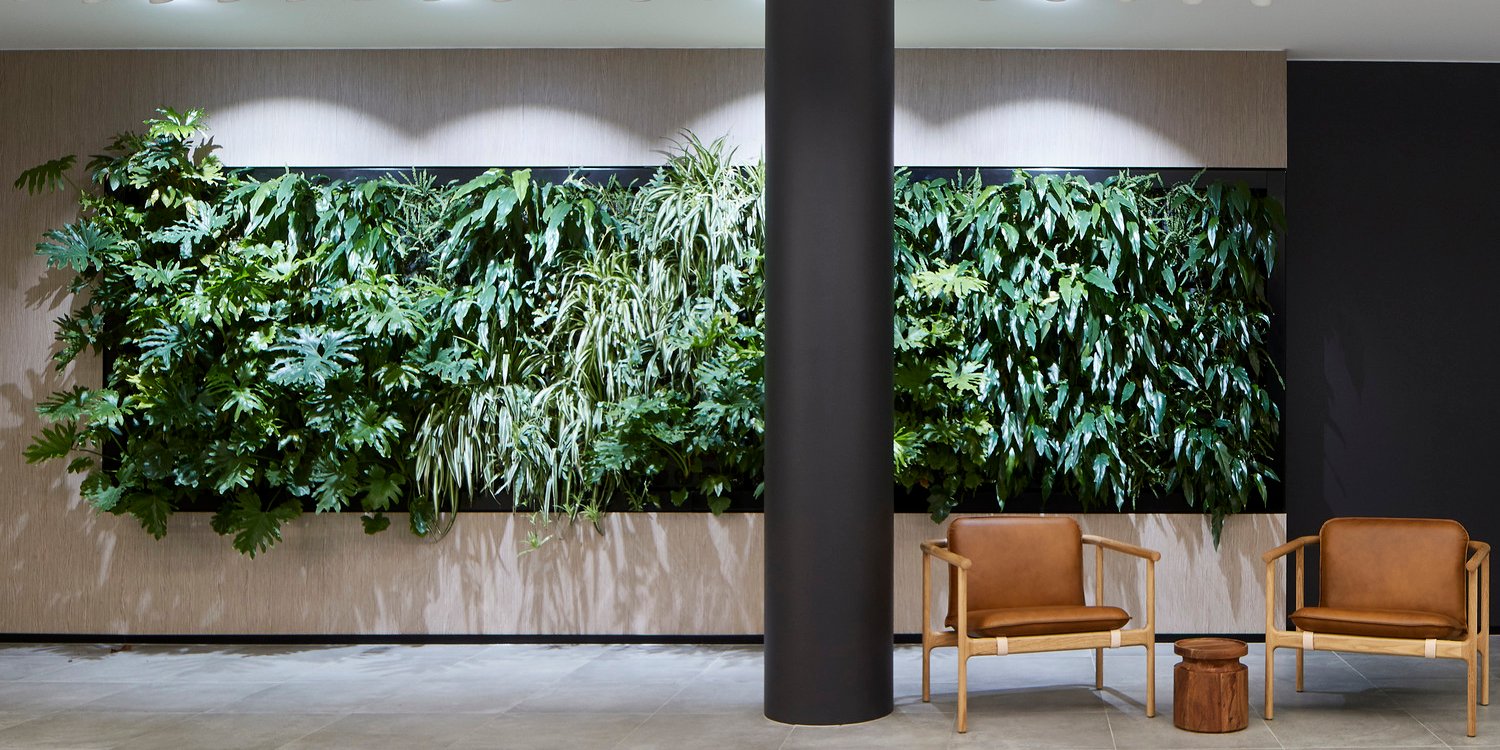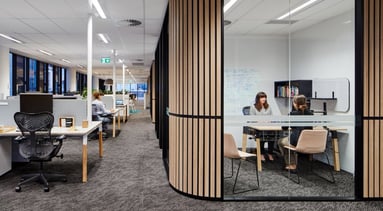The environmentally conscious workplace

In this three-part mini-series, we’ll be providing tips and advice on improving wellness in the workplace. This includes mental health, physical wellbeing and environmental responsibility.
Everyone’s talking about climate change, but it can be hard to know what to do for the best. Whether your office is staying how it is, you’re about to refurb or you have the freedom to create an entirely new workplace, here are some ideas about how to make your offices more environmentally friendly. And a lot of them will cost you less, too.
Introduce new strategies
Think about what you can do at policy level in every part of your business. For example, some global pharmaceutical companies require their global facilities to quantify their water use and report performance against reduction targets. This spans a wide range of activities from collecting rainwater for re-use to optimizing the use and maintenance of boilers.
You can also engage employees to think more broadly about the environment. For example, combine a volunteering scheme with your CSR policy and get teams planting trees, or introduce environmentally friendly travel-to-work schemes with car-sharing, subsidised public transport or bicycle-purchase incentives.
And for your procurement and disposal decisions, always consider the five golden Rs: Reduce, Reuse, Recycle, Repair, Rethink.
Plan from the ground up
If you’re moving to new premises, look carefully at how green the various options are. Or, if you’re going for a new-build, go as green as you like. For example, by maximising natural light and airflow, installing motion sensors and using smart exterior shuttering, you can reduce your energy consumption for lighting, heating and air-conditioning (which reduce your bills, too). You might have the option of capturing and filtering rainwater (for use in toilet cisterns, for example), finding alternative heat sources, or using solar panels.
Look for tax incentives, subsidies and grants to help you prioritise your strategy and get the support you need to fund what you’re planning.
“Ground source heat pumps are providing businesses with a viable heating alternative at considerably lower cost. And with a low environmental impact, it could be just the option you are looking for.”
– TalkBusiness[i]
Know the facts
There’s a lot of confusion about how to really go green. For example, there’s an ongoing debate about whether paper towels or hand-dryers are better for the environment in bathrooms. Paper may not run on electricity but it still needs to be manufactured and transported; modern hand-dryers are fast, so they use less power, but perhaps they get upgraded too often. And can plants help purify the air in your offices? Consider your strategies carefully, based on the latest information (contextualised for your own workplace) – and get professional advice.
“Imagine a small office, 10 feet by 10 feet by 8 feet. You would have to put 1,000 plants in that office to have the same air-cleaning capacity [as] the typical air-exchange rate in an office ventilation system… That’s 10 plants per square foot of floor space.”
– The Atlantic, 2019[ii]
Consider little details
Look around your office, can you make a more environmentally friendly switch? Instead of throwing away empty plastic biros and dried-up highlighters, go for refillable fountain pens (so much more stylish, anyway) and highlighter pencils that you can sharpen and will last for years. Look for reusable coffee filters and refillable machine pods; use loose-leaf tea or plastic-free tea bags. Eco-friendly washing-up liquid bottles allow you to get the same bottles endlessly refilled. Casual days mean fewer days wearing suits and thus less consumption of dry-cleaning fluid.
Make suppliers accountable
Increasingly, business are asking suppliers for their green credentials – even making it part of the tender process. Partly it’s to do with the products and services they provide you with: is your stationery sustainably sourced and acid-free? Does your cleaning company use non-toxic, cruelty-free products? How is your old IT equipment disposed of? But it’s also how those suppliers consider the environment in their own workplaces – how green are they?
Get everyone on board
Sometimes, the task of being the office ‘greenie’ can fall to one enthusiastic member of staff while everyone else heaves a sigh of relief. And no one likes passive-aggressive notices about switching off the lights or not overfilling the kettle. Yet everyone needs to play their part – so get everyone engaged by whatever means you can. Ensure people hear the green message from the top; get professional advice so your green schemes will be credible and effective; and incentivise staff to come up with ideas and alternatives. You could even make it part of performance reviews.
Top tips for an environmentally conscious office
- Use clever materials – building materials are available which absorb air-borne pollutants, particularly from vehicle exhaust.
- Use natural materials – natural materials mean fewer synthetics and often a shorter manufacturing process; just check the sustainability credentials.
- Harness the natural – Look at how you can use nature around you, rather than generating it or pumping it in. Think wind, geothermal, solar, rainwater, etc.
- Get smart – Smart offices and buildings use intelligence, technology and automation to cut your bills while making employees feel more comfortable and productive.
- Play with light – Paler colours and reflective surfaces will cut the number of lights you switch on. Walls and partitions needn’t be solid but could be transparent, low-height or filigree, for example.
- Look at the floor – On the one hand, hard floors can be swept while carpets are often vacuumed daily (consuming electricity). However, carpets provide insulation against both cold and heat, so weigh up your options carefully based on your local climate.
- Position carefully – Making the stairs closer and more obvious than the lifts will cut your power bills while also encouraging employee fitness.
- Design spaces for recycling – Create dedicated areas in workspaces, public spaces, restrooms, kitchens and cafeterias to ensure there’s plenty of well-designed provision for all types of recycling and that it never overflows and becomes unsightly.
To find out more about how you can incorporate better wellness in the workplace, get in touch with our team today.


